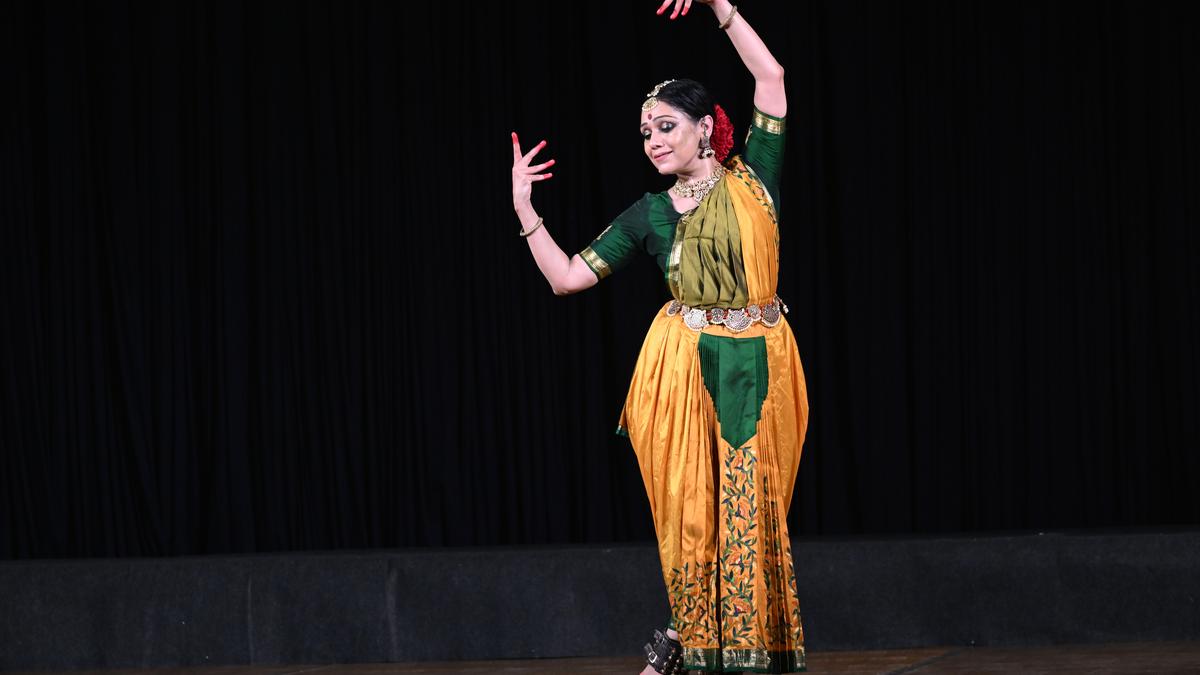Every year between August and September, Natyarangam, the dance wing of the Narada Gana Sabha, presents its annual thematic dance festival, bringing together eminent personalities including musicians, dancers and scholars on one platform.
The festival provides an opportunity for young talented dancers to perform, and gives them a chance to conceptualise and create a complete performance on a chosen theme. Each year’s edition will have a different theme. This year’s festival, titled ‘Ritu Bharatam’, is based on the six seasons.
The theme offered the artists an opportunity to unleash their imagination and explore the myriad facets of each season. But the committee’s guidelines covered a wide range of themes from Kalidasa to Sangam and Ragamala paintings to festivals, making it difficult for the dancers to fully explore the essence of each season. A specific template, which required the dancers to integrate their ideas, resulted in a similar pattern being repeated on all days.
Rama Vaidyanathan has divided this season into five parts, starting with Soumya and ending with Apeksha. | Photo Credit: Srinath M
The festival began with Rama Vaidyanathan’s performance on ‘Vasantha Ritu’ (Spring). Rama had divided the season into five parts, starting with Soumya (season of equanimity), Punarvartan (rejuvenation), Kama Rupini (love), Bahu Varni (multicolour), and Apeksha (hope).
Spring by Ram Vaidyanathan
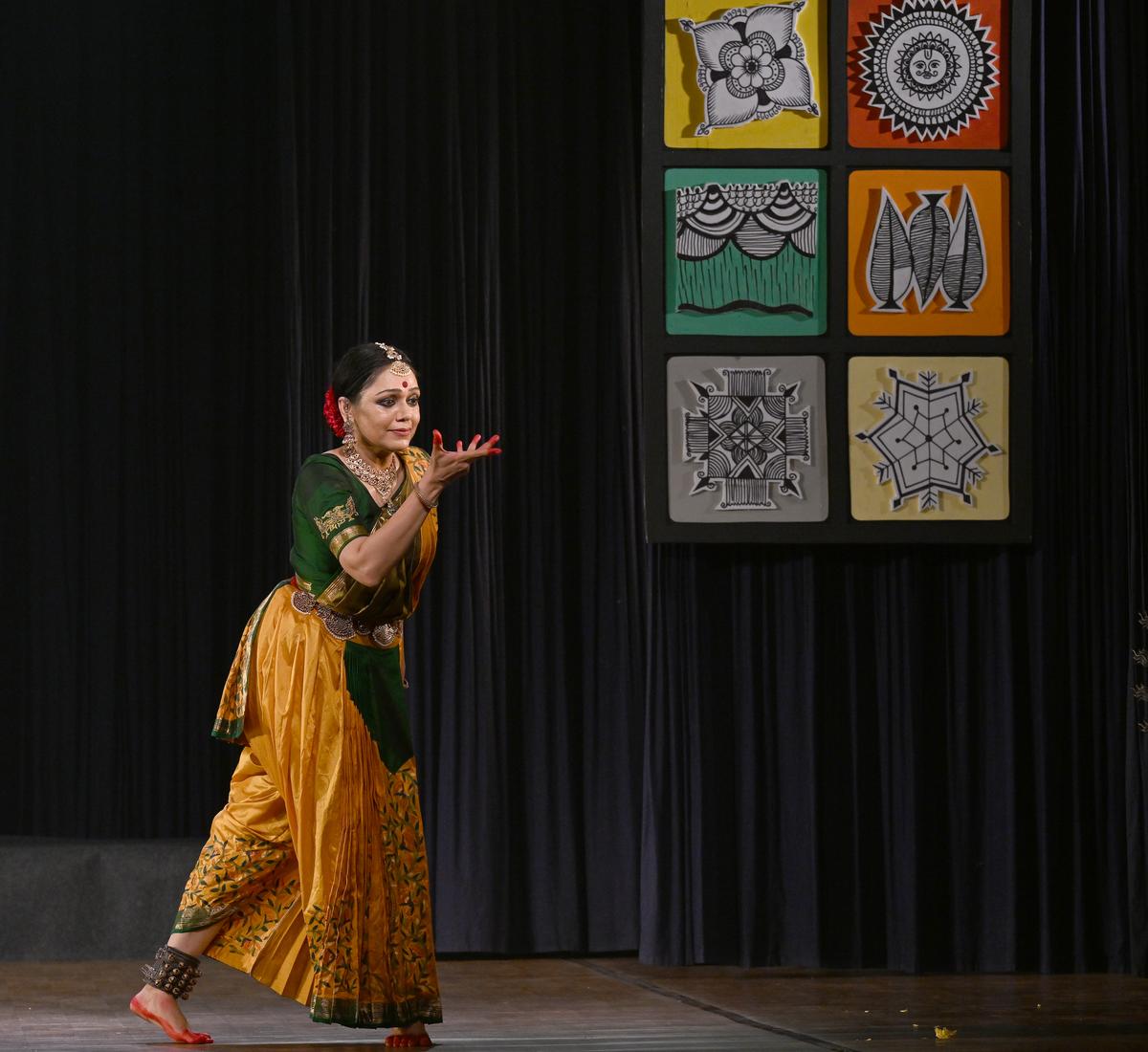
Ram Vaidyanathan’s performance was titled Vasant Ritu. | Photo Credit: Srinath M
His description of night and day effectively expressed the difference in the time cycle associated with the seasons. He created visual imagery with an interesting soundscape to enhance the ideas – the scattering of seeds, to the rhythmic tune of tanam; the use of vocal passages to depict the various flowers of the season; and culminating on the lotus flower on which Goddess Saraswati stands. An elaborate exploration was done for the song ‘Saraswati Namostute’ composed by GN Balubrahmanyam in Raga Saraswati.
The entry and exit for the portion showing Manmatha moving on his vehicle parrot was beautifully presented. The description of cool breeze, swaying palm trees, birds, bees, peacocks and deers was a bit exaggerated, spoiling the mood. Various aspects like the use of colours during the Raas, Holi festival and the depiction of spring season as newlyweds were well depicted.
The soundscape was interestingly conceived by S. Vasudevan, who judiciously used instruments like the ghatam, kanjira and sitar along with appropriate ragas for the scenes.
Greeshma Rithu by Apoorva Jayaraman

Apoorva Jayaraman performing in Natyarangam’s Ritu Bharatham. | Photo Credit: Srinath M
Now it was time to move on to the next season – summer, when Apoorva Jayaraman performed ‘Greeshma Ritu’. Wearing a waistcoat over a dress, Manmath made his presence felt again. Apoorva chose the verses of Kalidasa Ritu Sanharam To depict Kamadeva. The bent sugarcane bow, the arrow’s withered flowers and the tired parrot were painted to express the mood of lethargy and weariness prevailing in this season.
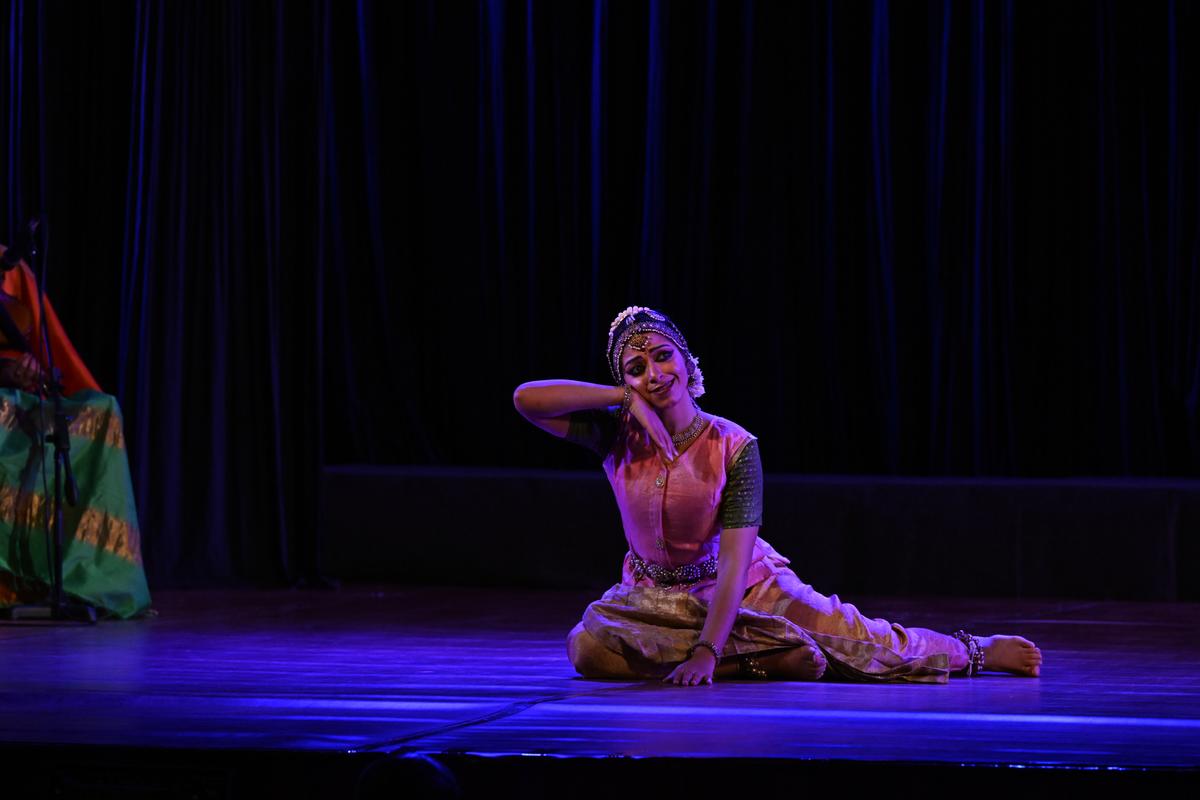
Apoorva Jayaraman at Natyarangam’s Ritu Bharatam festival. , Photo Courtesy: Srinath M
The issue of water scarcity was poignantly portrayed through a beautifully acted sequence that depicted a mother’s love as she quenches her child’s thirst with the little water she has before setting out on a long journey to procure drinking water. Though there are many details to depict the seasonal effect of summer, the whole feel of the atmosphere and the spirit of the season was influenced by these narratives. Even the costumes did not reflect the colours.
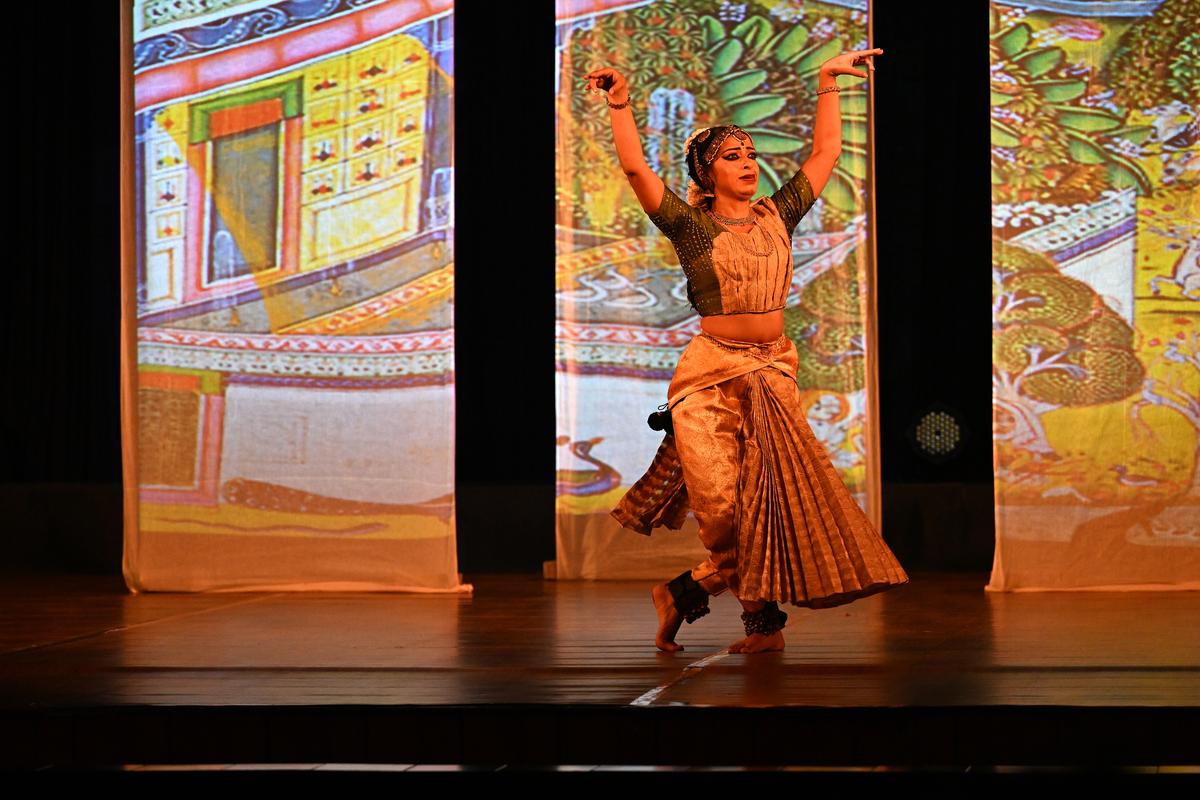
Apoorva Jayaraman performed Greeshma as part of the Ritu Bharatham festival of Natyarangam. | Photo Credit: Srinath M
The rhythmic jathis to represent the blazing sun and fire, and some notes to represent the peacock were interesting, but the repeated use of the same musical phrases throughout the performance proved to be a hindrance.
Vaibhav Aarekar’s rain
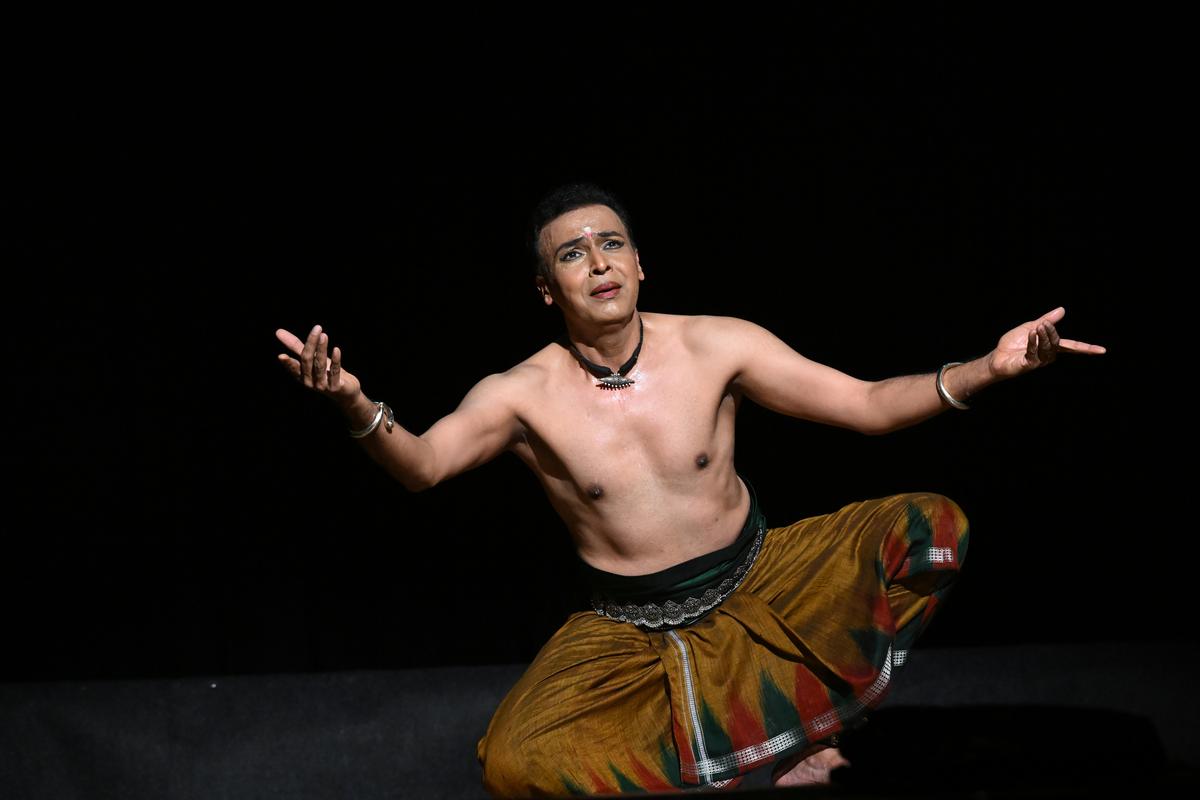
By Vaibhav Arekar (Varsha). | Photo Credit: Srinath M
The focus of the series shifted to a dance drama genre as ‘Varsha – Harvest of Lost Dreams’ presented by Vaibhav Arekar came to the fore. With an interesting soundscape and a musical group of talented artists dressed in black, Vaibhav depicted ‘Varsha’ (rainy season) through an entertaining portrayal.
The premise of Vaibhav’s performance was based on a farmer’s connection to nature and the emotions and situations that develop between them. It began with a scene of a man ploughing, tilling and sowing seeds, reflecting his anticipation of rain to nourish the soil. However, when the rain did not come, he experienced disappointment, as well as feelings of anger and discomfort during the fierce monsoon. The narrative concluded with the man bowing down in complete surrender.
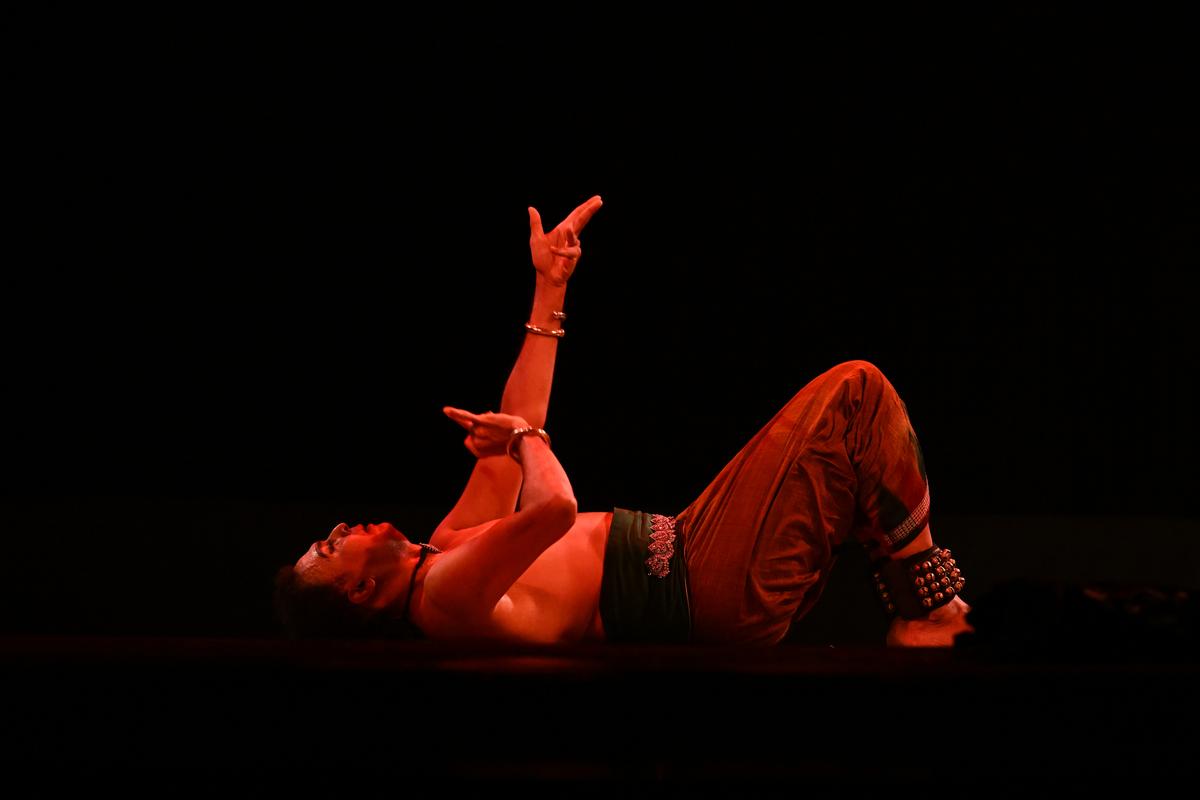
Vaibhav Arekar uses graceful and fluid hand movements to convey the idea of intimacy. He performed the session (Rain) at the Ritu Bharatham festival in Natyarangam. | Photo credit: Srinath M
The highlight of the performance was the scene in which a figure was lying horizontally under a spotlight. The hands slowly rise with graceful and fluid movements, which convey the feeling of intimacy in a charming way. By comparing the Sakhyam of the clouds and the earth and the emotional bond between a man and his beloved, Vaibhav’s dramatic approach made this scene captivating.
Dance elements like Jathi Korvais and Adavu were beautifully used to express the energy of the sun and the fierce intensity of water. Musical expressions in keeping with the ideas included Dikshitar’s composition ‘Anandaamritakarshini’, a Sangam poem, and compositions of Kalidasa and Bharathiyar.
For many, the monsoon evokes a sense of anticipation, joy and excitement. However, this exhibit depicts a brief exploration of that state of mind through childhood memories, highlighting that anxiety, anguish and anger are the predominant emotions during the monsoon.
visual images
Ragamala paintings are a treasure trove of visual images that highlight the moods of each season and the ragas and raginis associated with them. It was indeed a good idea to use them as source material, but the way they were used here diminishes their value.
Ram used a projected image of the frame to represent a character in the painting, but it could have been any painting, not necessarily Ragamala. Apurva split the image into three fabric panels, distorting the art form. Vaibhav used it as a straight projection and as a filler between the dance scenes. Care could have been taken by the artistes and organisers to present another art form with more sensitivity.
